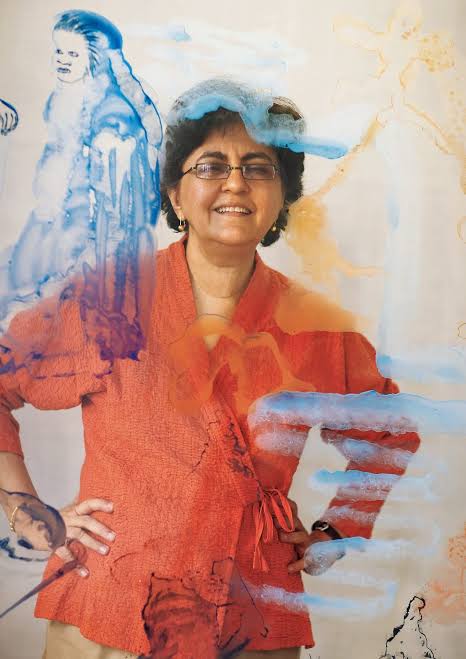
Artist Nalini Malani wins $700,000 Kyoto Prize for arts and philosophy

Nalini Malani, the pioneering video artist from India, has won the prestigious $700,000 Kyoto Prize for her transformative contributions to the art world. The Kyoto Prize, established in 1984, acknowledges individuals who have made significant advancements in scientific, cultural, and spiritual realms. “Nalini Malani, widely considered the pioneer of video art in India, has created phantasmagorical spaces with approachable art forms,” a representative from the Inamori Foundation which awards the prize said in a release.
Established in 1984, the Kyoto Prize honours those who have made significant contributions to improve our scientific, cultural and spiritual understanding and experience of humankind. Besides Malani, the other two laureates are Japanese scientist Ryuzo Yanagimachi (Kyoto Prize in Advanced Technology) and American mathematician Elliott H. Lieb (Kyoto Prize in Basic Sciences). Each winner receives a diploma, the Kyoto Prize medal and a $700,000 fund. The award ceremony will take place in Kyoto this November.
Works rooted in the struggles and strife of people
Born in Karachi, a year before it became part of Pakistan, Malani (77) has built her art around observing the struggles of people and socio-political changes. Her work reflects the impact of migration, feminist issues, and the recent COVID-19 lockdown on migrant workers in India.
Malani’s artwork encompasses various mediums, including theatre, videos, installations, mixed media paintings, and drawings. She is known for her iconic visual language, which has evolved from stop motion and erasure animations to digital animations, where she draws directly onto a tablet with her finger. Her pieces often reference Greek and Hindu mythology, with recurring characters symbolising the struggles of women.
Also read: Riyas Komu interview: How art can be a site of political discourse, dissent
Some of her notable works include Dream Houses (1969), Unity in Diversity (2003), Mother India (2005), and In Search of Vanished Blood (2012). Malani’s art combines real and virtual spaces, referencing divisions, gender, and cyborgs. Her two-dimensional works encompass oil paintings and watercolours that evoke dreams and fantasies through a rapid brush style. Her contributions to the art world have been recognised with awards and honours, including the Arts & Culture Fukuoka Prize in 2013, making her the first Asian woman to receive the accolade.
Early experiments with new media
Graduating from Sir J. J. School of Art in Bombay in 1969, Malani began experimenting with new media early in her career and gained fresh perspectives during her studies in Paris. She created a series of colour stop-motion films called ‘Dream Houses’ during the same year. Her studies at École Nationale Supérieure des Beaux Arts in Paris in the 1970s provided her with a fresh perspective on her homeland and its artistic possibilities.
In the 1980s, Malani learned the technique of reverse painting from renowned artist Bhupen Khakhar. This skill allowed her to create compelling figurative work with strong character development. During her time as an illustrator for The Times of India, she delved into Indian mythology, which continues to influence her artwork.
Also read: How SH Raza and Progressive Artists’ Group put India on international art map
Malani’s solo exhibitions were held at prestigious institutions such as the Institute of Contemporary Art in Boston (2016), Centre Pompidou in Paris (where she became the first living Indian artist to have a show, 2017), and Stedelijk Museum in Amsterdam (2017). In 2020, her installation Can You Hear Me? was showcased at the Whitechapel Gallery in London.
She also received a two-year research fellowship in contemporary art from London’s National Gallery, becoming the first Indian to be awarded this honour. Her retrospective was organised by the Kiran Nadar Museum of Art in New Delhi in 2014. Malani divides her time between Mumbai and Amsterdam, maintaining an active artistic practice in both cities.

